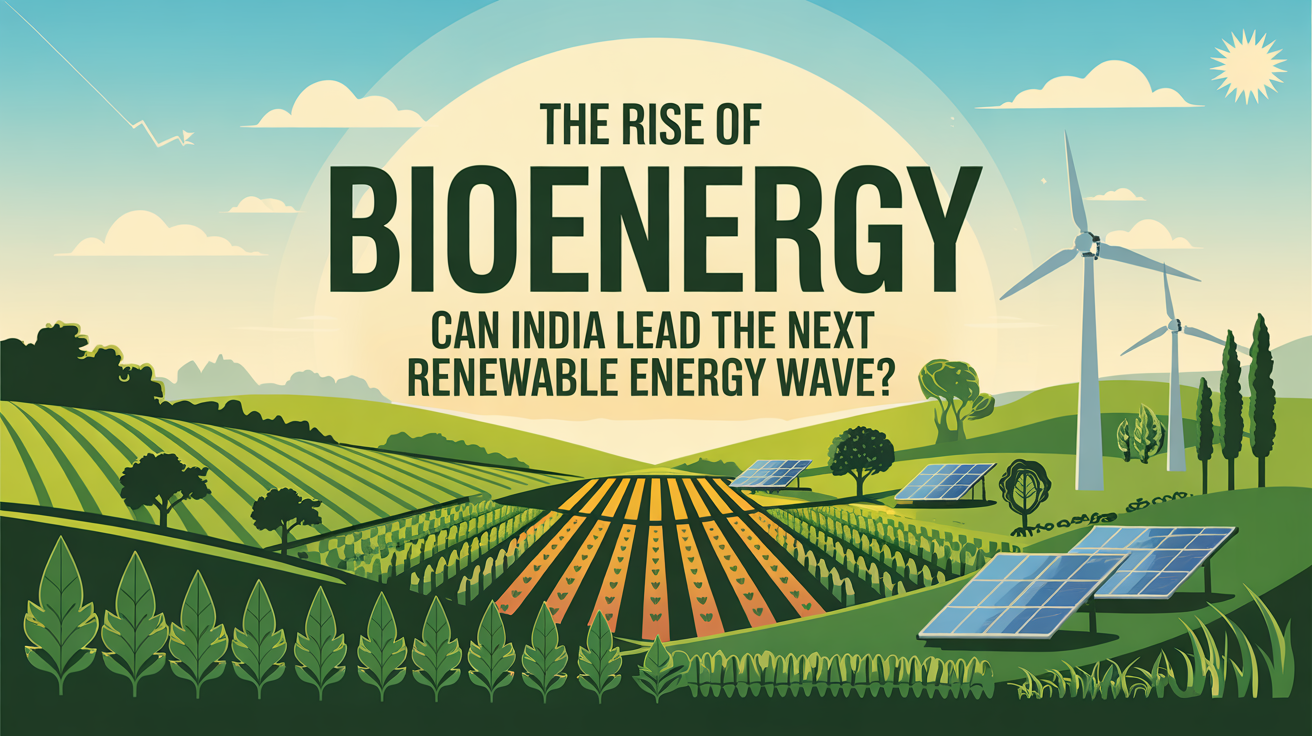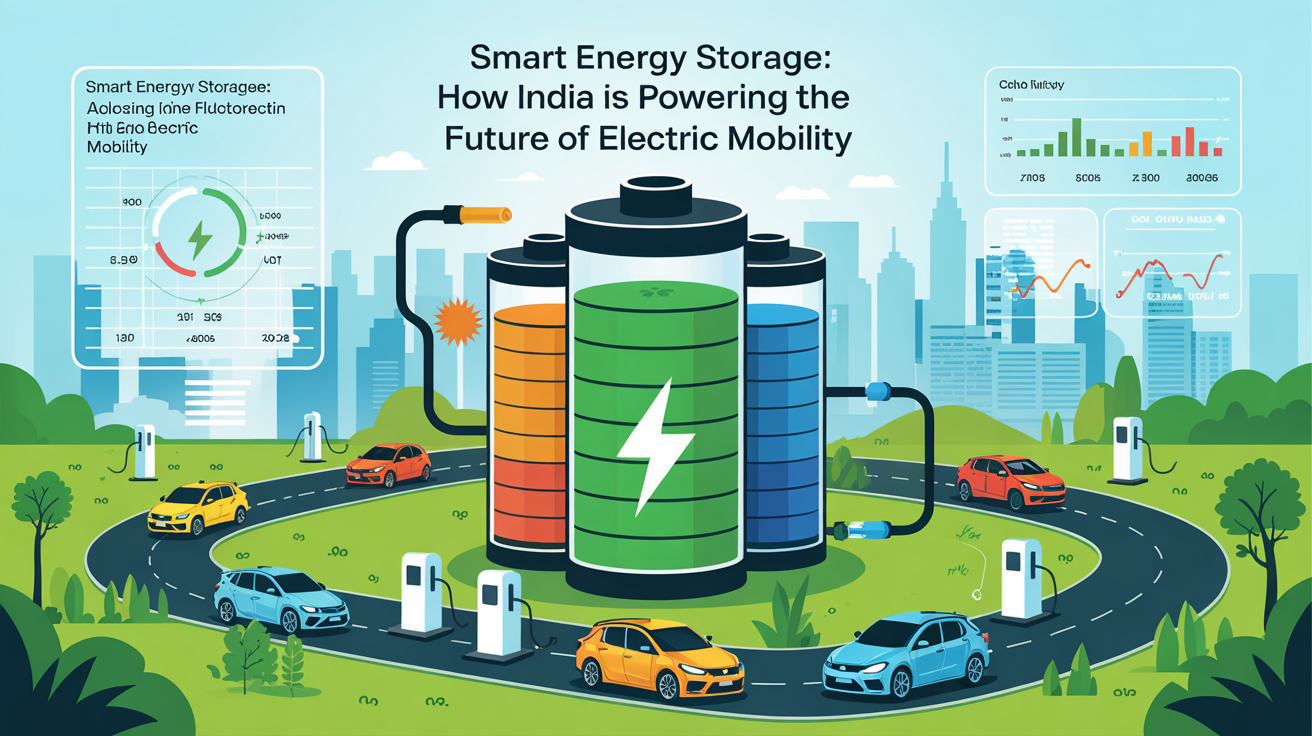India is in the forefront of a global energy revolution. While every nation in the world is racing toward reducing carbon emissions and toward adopting sustainable energy sources, bioenergy is becoming an important ingredient in that shift. The promise of bioenergy is to bring a cleaner and greener future while also tapping the massive agricultural and organic waste resources in India.
What is Bioenergy?
It means energy from biological sources—plants, animals, and also organic waste. Whereas fossil fuels take millions of years to form, bioenergy uses renewable organic materials and could indeed be replaced natively.
- Biogas (from organic waste and animal manure)
- Bioethanol (from crops like sugarcane and corn)
- Biodiesel (from vegetable oils and fats)
- Biomass power (burning of agricultural waste)
Biomass is essential not only in supplying energy but also in waste management and greenhouse gas remediation.
Bioenergy Will Matter for India
This could be one of the most important sources of energy for India given the size of India’s agricultural base, increasing population, and growing energy demand; here are a few reasons:
Natural Raw Material: Millions of tons of agricultural residues are generated when India grows. Instead of burning residue, which causes severe air pollution, this waste should rather be converted into bioenergy.
Electricity Access: In many remote villages, people do not have electricity yet. These communities can be electrified with decentralized bioenergy systems.
Jobs: New jobs can be generated in the thousands under the bioenergy sector in farming communities, in rural industries, and in technology development.
Climate Goals: India promises to achieve net-zero emissions by 2070 since bioenergy would cut the dependency on coal and oil.
Also Read: Production of Biodegradable plastic Products
Current Position of India on Bioenergy
India has made small strides regarding bioenergy:
- Biogas: The present scenario regarding Bioenergy in India: Up to date, however, India has taken small steps regarding bioenergy
- Bioethanol: This ambitious Indian program has taken ethanol blending into petrol as a goal for 2025.
- Compressed biogas (CBG): The government wants to install more than 5,000 CBG plants in India under the SATAT initiative (Sustainable Alternative Towards Affordable Transportation).
- Biomass Power Plants: Several states, including Punjab, Haryana, and Maharashtra, have set up a number of biomass power generation projects for converting waste into energy for a number of years.
Despite the fact that progress has been made, problems still remain. Currently, bioenergy production only caters to a tiny fraction of India’s energy requirement, with huge potential for expansion.
Leading an Indian Bioenergy Revolution Truly
India must formulate a strong multi-pronged approach if it is to lead globally on bioenergy:
1. Develop Efficient Supply Chains
create better systems for the collection, movement, and storage of agricultural residue, food waste, and organic materials.
2. Invest in Research and Development
Self-sustaining, indigenous, affordable technologies for bioenergy in the Indian context, such as modular biogas plants and high-performance biomass gasifiers, should be promoted.
3. Enhance Participation of Farmers
Train farmers, incentivize them, give them direct ownership of projects in bioenergy, and convert them into partners instead of mere suppliers.
4. Encourage Public-Private Partnerships
Support industries, startups, and very large companies to invest in projects, along with government support and clear policy frameworks.
5. Integrate Bioenergy into National Energy Strategy
Consideration of ,this within future energy planning of India along with solar, wind, and hydropower.
6. Create Awareness Among Citizens
National campaigns on how bioenergy provides cleaner air, rural development, and climate action for public buy-in will raise awareness among citizens.
India’s Global Opportunity
The demand for bioenergies and clean fuels is exploding across the world. Every country is looking for these imports: sustainable aviation fuels (SAF), and renewable gas. Acting fast, India can turn itself into a major exporter of these technologies, fuels, and solutions. By being at the forefront of innovation and by setting up scalable models within the country through creating favorable policies, India can position itself not just as a domestic leader but as a global hub in the 21st century.
Read our blog: Comprehensive Guide to Launching a Bio-Coal Briquettes Enterprise
The Green Revolution in Energy
Bioenergy is a one-stop solution to many problems including rural waste management, energy access, employment generation, and carbon reduction. India has all the natural resources, the technical talent, and, perhaps, the sense of urgency to take a lead in this renewed energy wave. By putting in place the proper investments, smart policies, and collective action, India will be turning bioenergy from a niche solution into national strength—a bright beacon, lighting up villages and fueling industries, while inspiring the world to follow its own green energy path.
Promises of bioenergy are no longer a dream, so distant in the horizon. It is revolution coming and ready to be led- and India has all the resources necessary for being at the front of this research.










